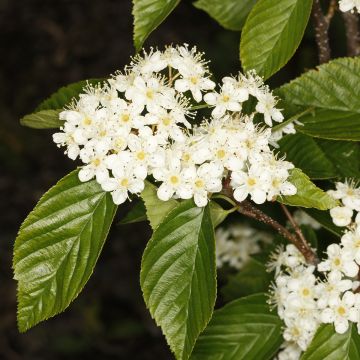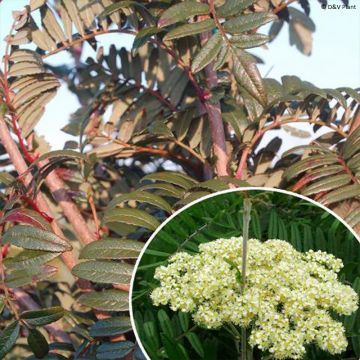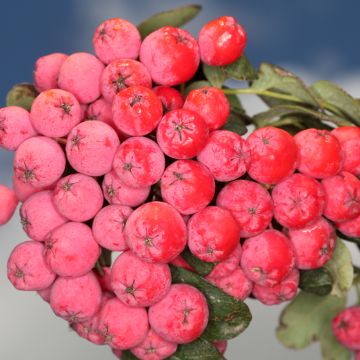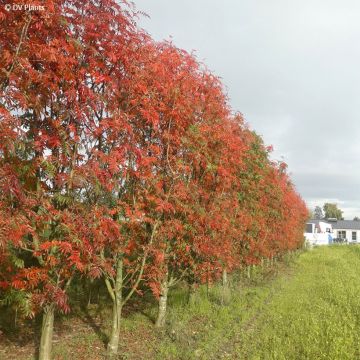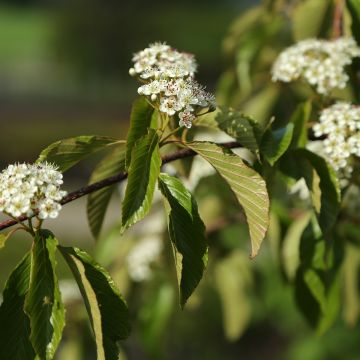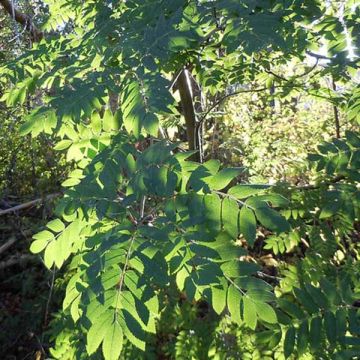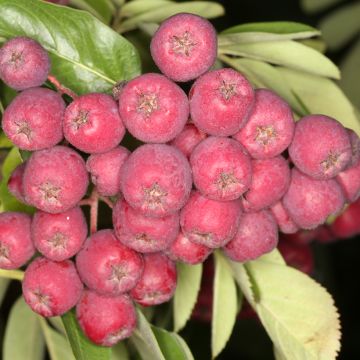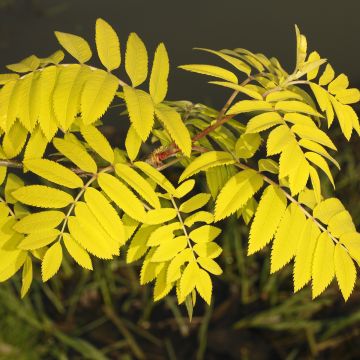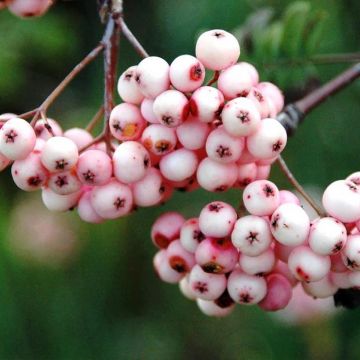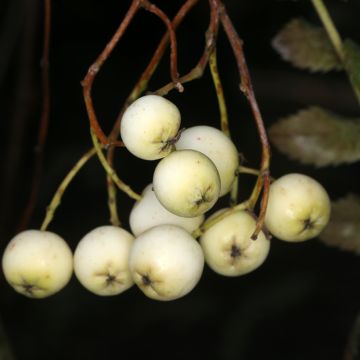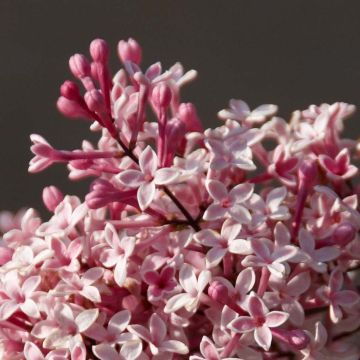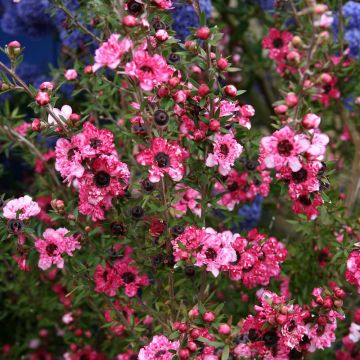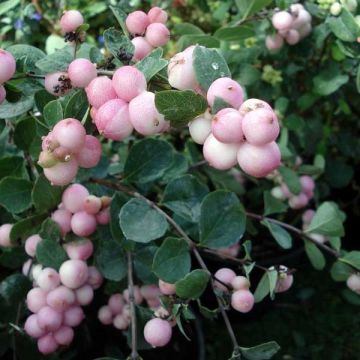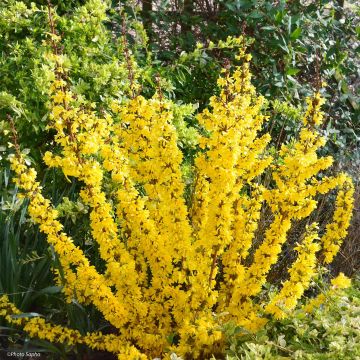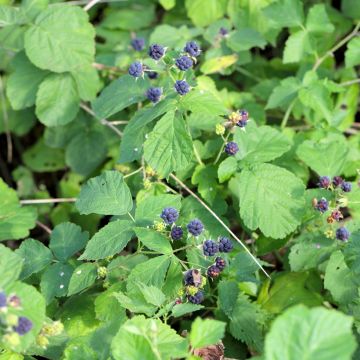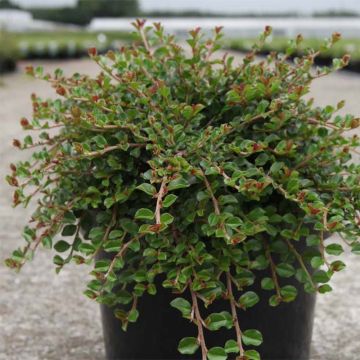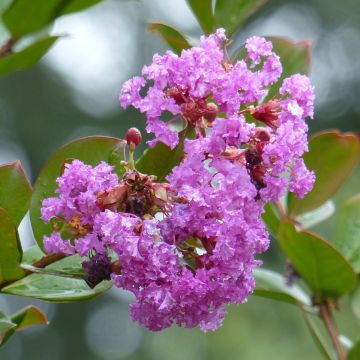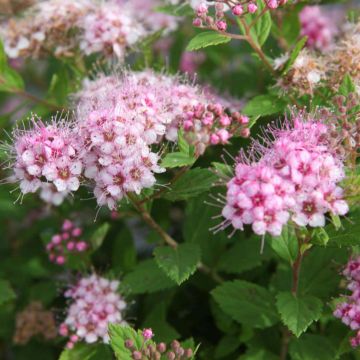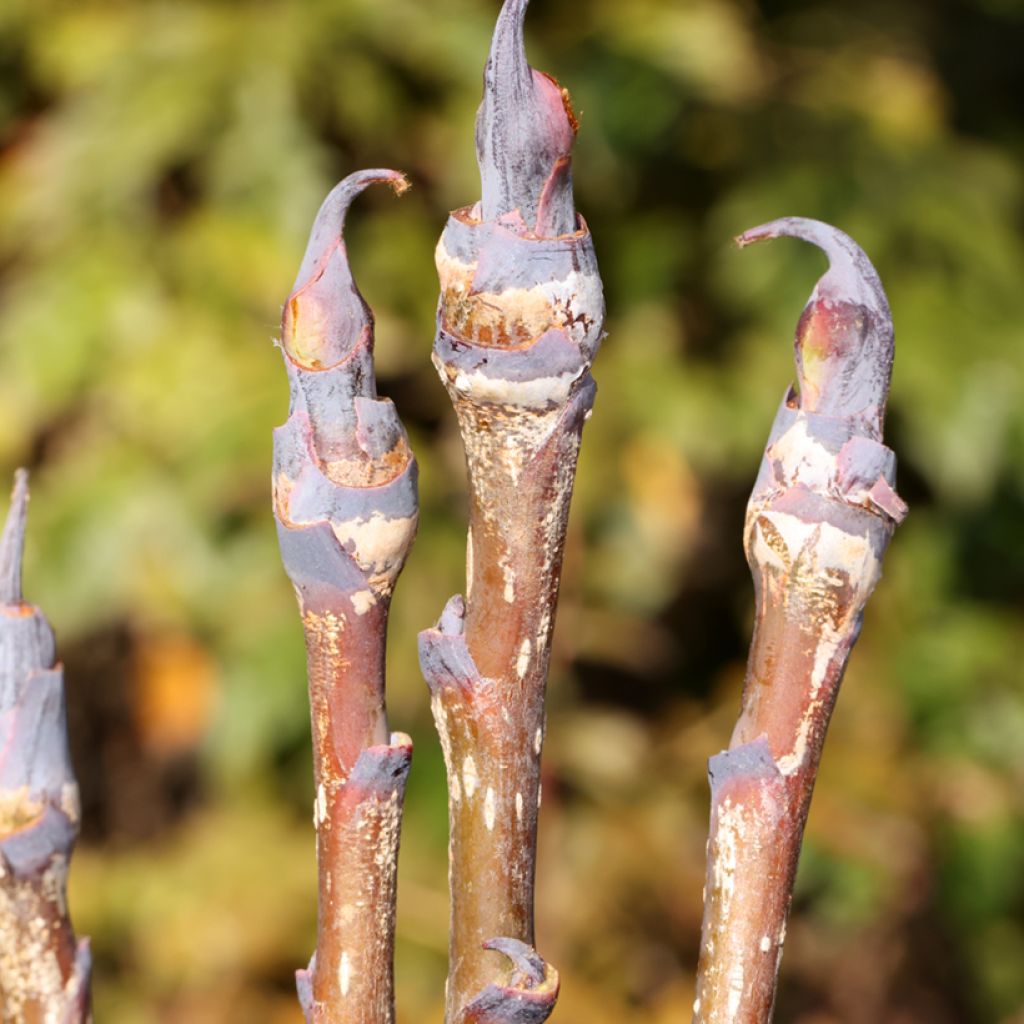

Sorbus matsumurana - Japanese rowan
Sorbus matsumurana - Japanese rowan
Sorbus matsumurana
Rowan, Japanese rowan
This item cannot be shipped to the selected country
Oversize package delivery charge from €6.90
More information
Schedule delivery date,
and select date in basket
This plant carries a 24 months recovery warranty
More information
We guarantee the quality of our plants for a full growing cycle, and will replace at our expense any plant that fails to recover under normal climatic and planting conditions.
Oversize package: home delivery by special carrier from €6.90 per order..
Express home delivery from €8.90.
Does this plant fit my garden?
Set up your Plantfit profile →
Description
Sorbus matsumurana is a Japanese mountain ash, rare in cultivation. It is a small deciduous tree or large bush native to the mountains of Japan, which will charm with its rounded habit, its speckled bark, its well-furnished pinnate foliage, its white spring flowering, and its highly decorative red fruits in autumn. This variety is ideal for adding a touch of Japan or exoticism to the garden. It will make a beautiful specimen when planted alone.
Sorbus matsumurana belongs to the Rosaceae family, like all mountain ashes. It is a botanical species native to the mountainous regions of Hokkaido and northern Honshu in Japan. In its natural habitat, this mountain ash grows in cold-exposed environments, on humus-rich, well-drained, slightly moist soils. This tree can reach a height of 7 to 8 m and a spread of 5 m. It often takes the form of a large bush with multiple trunks, with a beautiful round and dense crown. Its pinnate, bluish-green leaves composed of 11 oblong and toothed leaflets, turn yellow or orange in autumn before falling. These warm colours create an interesting contrast with the red fruits. The branches are smooth. In winter, they are adorned with long buds measuring approximately 1.3 cm in length, dark blue-violet in colour, smooth except for some hairs on the edges of the scales. Flowering occurs in May-June and is visited by bees. The flowers, grouped in small clusters measuring 5 to 7.5 cm wide, are composed of cream-white petals. The ellipsoid to globose fruits measure approximately 1 cm in length. They turn bright red when ripe. The bark of this Mountain Ash is smooth and light brown-grey. It becomes covered with white lenticels on old trees.
Sorbus matsumurana can be used as a solitary specimen or in a shrub bed inspired by exotic, Japanese, or naturalistic themes. Its moderate growth allows it to be accommodated in many gardens. It pairs well with Sorbus commixta 'Dodong', which resembles it, Acer palmatum 'Dissectum Atropurpureum', which offers beautiful purple autumn colouring, Prunus serrulata 'Kazan' for its spectacular spring flowers in pink pompoms, and Viburnum plicatum 'Grandiflorum' for its white ball-shaped flowers and its flamboyant autumn foliage.
Report an error about the product description
Plant habit
Flowering
Foliage
Botanical data
Sorbus
matsumurana
Rosaceae
Rowan, Japanese rowan
Sorbus matsumurana (Makino) Koehne
Southeast Asia
Other Sorbus - Mountain Ash
Planting and care
Sorbus matsumurana is best planted in autumn. It is not demanding in terms of exposure, it can be placed in full sun or partial shade. However, sunlight promotes and enhances the colouration of its fruits and autumn foliage. This tree does not like calcareous, dry, or poorly drained soils. It appreciates a deep, humus-rich, moist, but well-drained, neutral to slightly acidic soil. Water it during very dry periods. Remove dead wood or diseased branches. If necessary, at the end of winter and before vegetation resumes, prune the inner branches that cross and keep only the vigorous branches to maintain the tree's good habit.
Mites, aphids, and scale insects are the main enemies of the mountain ash. Powdery mildew and sooty mould, of fungal origin, are diseases that can also affect this tree.
Planting period
Intended location
Care
This item has not been reviewed yet - be the first to leave a review about it.
Hedge shrubs
Haven't found what you were looking for?
Hardiness is the lowest winter temperature a plant can endure without suffering serious damage or even dying. However, hardiness is affected by location (a sheltered area, such as a patio), protection (winter cover) and soil type (hardiness is improved by well-drained soil).

Photo Sharing Terms & Conditions
In order to encourage gardeners to interact and share their experiences, Promesse de fleurs offers various media enabling content to be uploaded onto its Site - in particular via the ‘Photo sharing’ module.
The User agrees to refrain from:
- Posting any content that is illegal, prejudicial, insulting, racist, inciteful to hatred, revisionist, contrary to public decency, that infringes on privacy or on the privacy rights of third parties, in particular the publicity rights of persons and goods, intellectual property rights, or the right to privacy.
- Submitting content on behalf of a third party;
- Impersonate the identity of a third party and/or publish any personal information about a third party;
In general, the User undertakes to refrain from any unethical behaviour.
All Content (in particular text, comments, files, images, photos, videos, creative works, etc.), which may be subject to property or intellectual property rights, image or other private rights, shall remain the property of the User, subject to the limited rights granted by the terms of the licence granted by Promesse de fleurs as stated below. Users are at liberty to publish or not to publish such Content on the Site, notably via the ‘Photo Sharing’ facility, and accept that this Content shall be made public and freely accessible, notably on the Internet.
Users further acknowledge, undertake to have ,and guarantee that they hold all necessary rights and permissions to publish such material on the Site, in particular with regard to the legislation in force pertaining to any privacy, property, intellectual property, image, or contractual rights, or rights of any other nature. By publishing such Content on the Site, Users acknowledge accepting full liability as publishers of the Content within the meaning of the law, and grant Promesse de fleurs, free of charge, an inclusive, worldwide licence for the said Content for the entire duration of its publication, including all reproduction, representation, up/downloading, displaying, performing, transmission, and storage rights.
Users also grant permission for their name to be linked to the Content and accept that this link may not always be made available.
By engaging in posting material, Users consent to their Content becoming automatically accessible on the Internet, in particular on other sites and/or blogs and/or web pages of the Promesse de fleurs site, including in particular social pages and the Promesse de fleurs catalogue.
Users may secure the removal of entrusted content free of charge by issuing a simple request via our contact form.
The flowering period indicated on our website applies to countries and regions located in USDA zone 8 (France, the United Kingdom, Ireland, the Netherlands, etc.)
It will vary according to where you live:
- In zones 9 to 10 (Italy, Spain, Greece, etc.), flowering will occur about 2 to 4 weeks earlier.
- In zones 6 to 7 (Germany, Poland, Slovenia, and lower mountainous regions), flowering will be delayed by 2 to 3 weeks.
- In zone 5 (Central Europe, Scandinavia), blooming will be delayed by 3 to 5 weeks.
In temperate climates, pruning of spring-flowering shrubs (forsythia, spireas, etc.) should be done just after flowering.
Pruning of summer-flowering shrubs (Indian Lilac, Perovskia, etc.) can be done in winter or spring.
In cold regions as well as with frost-sensitive plants, avoid pruning too early when severe frosts may still occur.
The planting period indicated on our website applies to countries and regions located in USDA zone 8 (France, United Kingdom, Ireland, Netherlands).
It will vary according to where you live:
- In Mediterranean zones (Marseille, Madrid, Milan, etc.), autumn and winter are the best planting periods.
- In continental zones (Strasbourg, Munich, Vienna, etc.), delay planting by 2 to 3 weeks in spring and bring it forward by 2 to 4 weeks in autumn.
- In mountainous regions (the Alps, Pyrenees, Carpathians, etc.), it is best to plant in late spring (May-June) or late summer (August-September).
The harvesting period indicated on our website applies to countries and regions in USDA zone 8 (France, England, Ireland, the Netherlands).
In colder areas (Scandinavia, Poland, Austria...) fruit and vegetable harvests are likely to be delayed by 3-4 weeks.
In warmer areas (Italy, Spain, Greece, etc.), harvesting will probably take place earlier, depending on weather conditions.
The sowing periods indicated on our website apply to countries and regions within USDA Zone 8 (France, UK, Ireland, Netherlands).
In colder areas (Scandinavia, Poland, Austria...), delay any outdoor sowing by 3-4 weeks, or sow under glass.
In warmer climes (Italy, Spain, Greece, etc.), bring outdoor sowing forward by a few weeks.

































